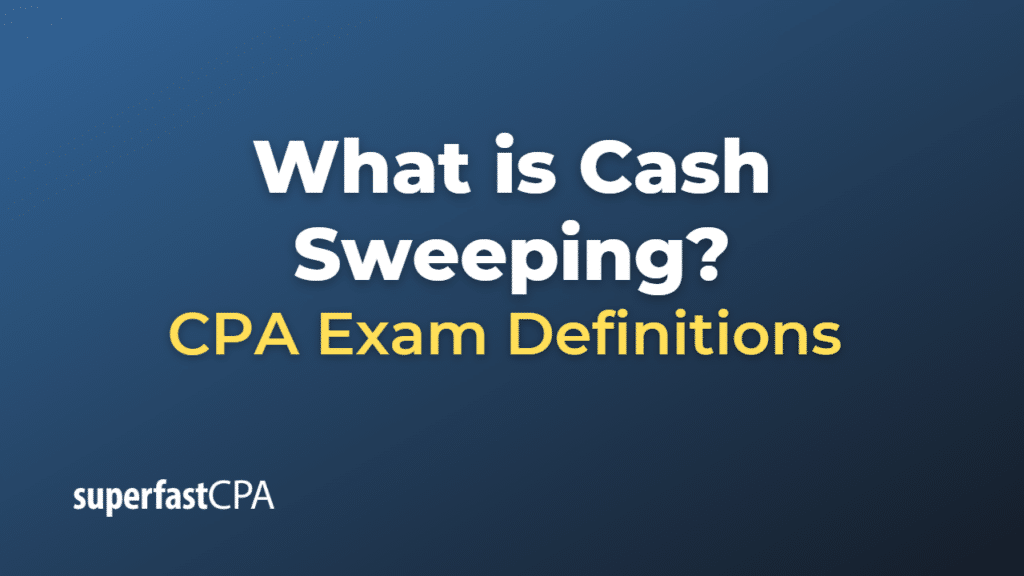Cash Sweeping
Cash sweeping, also known as cash pooling or cash concentration, is a cash management technique used by companies to optimize the use of their available cash resources. It involves consolidating the cash balances from multiple bank accounts, subsidiaries, or divisions of a company into a single centralized account, usually on a daily basis. The primary purpose of cash sweeping is to improve a company’s liquidity management, reduce borrowing costs, and maximize the return on idle cash.
By centralizing cash resources, a company can more efficiently manage its cash inflows and outflows. This process can help identify surplus cash in one account that can be used to cover shortfalls in another account, thereby reducing the need for external borrowing or overdraft fees. Additionally, a company can use the excess cash to earn interest income or invest in short-term marketable securities.
It’s important to note that cash sweeping arrangements can be subject to various regulatory and tax implications depending on the jurisdiction and the specific structure of the cash pool. Therefore, companies should carefully consider these factors when implementing a cash sweeping system.
Example of Cash Sweeping
Let’s consider a hypothetical example of a company using cash sweeping to optimize its cash management.
XYZ Corporation is a multinational company with several subsidiaries operating in different countries. Each subsidiary maintains its own bank account, and at the end of each business day, there are varying cash balances in each account. Some accounts have surplus cash, while others have deficits.
To optimize its cash management, XYZ Corporation implements a cash sweeping system. At the end of each business day, the company’s treasury department collects the cash balances from all subsidiary accounts and transfers them to a centralized master account held at the company’s headquarters.
Here’s a simplified representation of XYZ Corporation’s cash sweeping process:
- Subsidiary A: $10,000 surplus
- Subsidiary B: $5,000 deficit
- Subsidiary C: $15,000 surplus
After the cash sweeping process, the master account has a balance of $20,000 ($10,000 + $15,000 – $5,000).
The treasury department can now use the centralized cash to cover the deficit in Subsidiary B, reducing the need for external borrowing or overdraft fees. Additionally, XYZ Corporation can invest the remaining surplus cash in short-term marketable securities to generate interest income.
By implementing a cash sweeping system, XYZ Corporation can better manage its liquidity, reduce borrowing costs, and maximize the return on its idle cash. Keep in mind that this example is simplified and doesn’t take into account any potential regulatory or tax implications that might arise in a real-world scenario.













